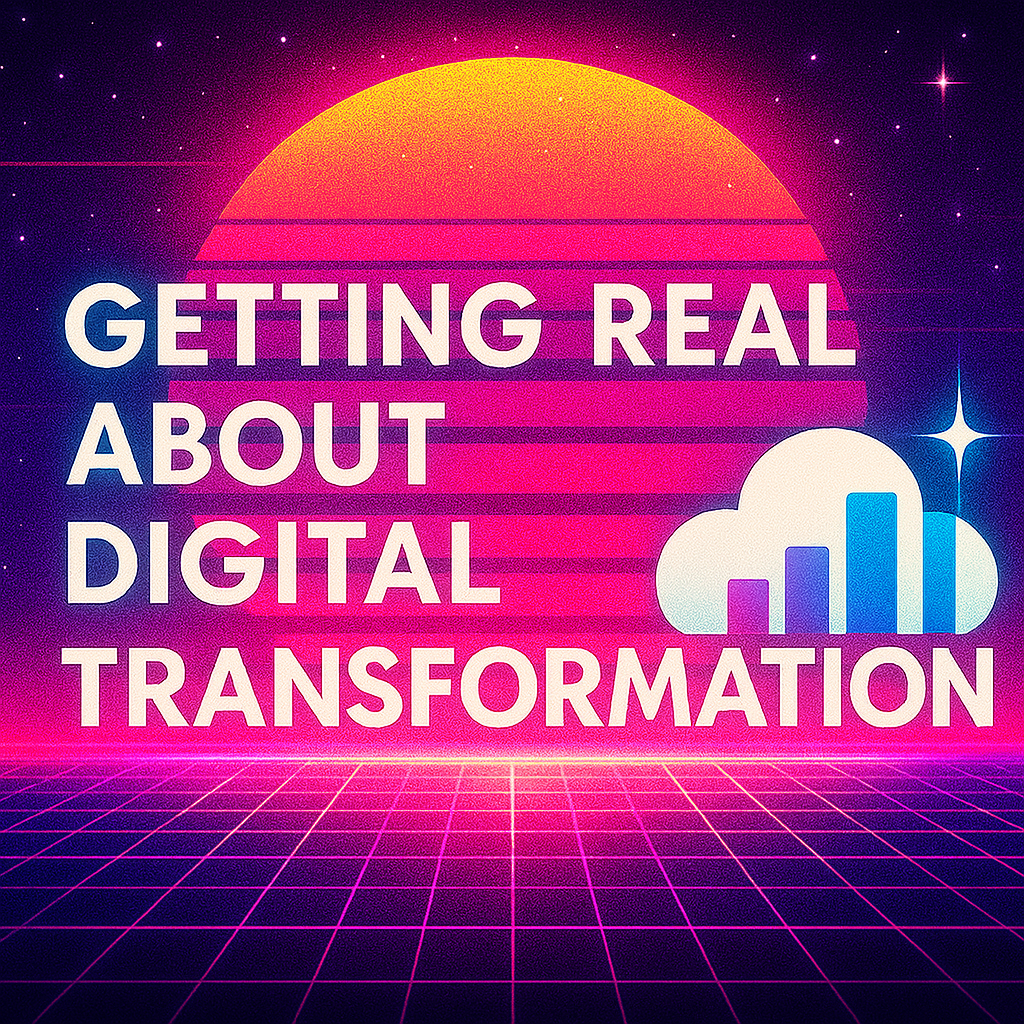Getting Real About Digital Transformation: What We’ve Learned

Digital transformation is one of those phrases that gets thrown around so often it starts to lose its meaning.
It shows up in vendor pitches, boardroom conversations, and keynote speeches promising a better, faster, smarter future. Yet behind all the buzz, many organizations still end up with stalled projects, missed expectations, and teams who wonder if the effort was worth it.
Transformation is not about buying the latest tool or chasing the next trend. It’s about getting the fundamentals right. And too often those fundamentals get skipped.
Over the last few weeks, we've unpacked some of the core truths that I'm sure some of us have had to live through...
Now it’s time to bring them together into one story.
Culture is always the first hurdle. I’ve been part of efforts with the right budget, the right vendors, and even clear executive sponsorship, yet the progress slowed because the culture wasn’t aligned. People held onto old processes because change threatened their sense of control. Departments defended their silos. Skepticism lived just under the surface. That resistance quietly chipped away at momentum until the program became harder than it needed to be. Peter Drucker once wrote that “culture eats strategy for breakfast,” and decades later that warning is still proving true inside every organization trying to change (Drucker, 1999). Gartner research reinforces the point, showing that organizations that prioritize cultural readiness are 3.5 times more likely to achieve transformation success (Gartner, 2021).
When culture begins to shift, mindset becomes the next test. I’ve lived through times when we rushed to acquire tools before we really understood the outcomes we wanted. It felt good in the moment because buying something new looks like progress, but the results never matched the investment. The turning point came when we stopped asking what tool we needed and started asking what problem we were solving and what success would look like. That shift changes everything. Research from MIT Sloan shows the same pattern: organizations with a strong digital mindset consistently outperform those that treat transformation as a series of technology purchases (Kane et al., 2019). Tools do not transform businesses. Leaders with clarity and discipline do.
Even with leadership focus and cultural alignment, the effort crumbles if the data cannot be trusted. I’ve been in meetings where three different reports, all pulled from different systems, told three different stories. Something as small as a duplicate vendor record can create massive downstream issues. Outdated data makes decision-making a guessing game. What we learned is that poor data quality doesn’t always appear as a budget line item, but it quietly erodes trust and effectiveness every day. The Harvard Business Review has shown just how damaging this can be, pointing out how dirty data drives up costs and undermines confidence across the business (Redman, 2018). I’ve personally lived through those hidden costs in wasted cycles, rework, and missed opportunities.
And then there’s scaling. Pilots are energizing because they prove that something new can work. But scaling those pilots without alignment multiplies chaos. Infrastructure that worked for a small team buckles under the weight of the enterprise. Processes that seemed fine in one department expose cracks when stretched across the company. I have heard where scaling has worked best when we slow down at the right moments. Alignment has to come first. Otherwise, growth only accelerates the friction. McKinsey’s global research reinforces this reality, showing that fewer than one in three companies actually achieve impact at scale, and the main reason is the lack of alignment between people, processes, and technology (Bughin et al., 2018).
Taken together, the lesson is simple but powerful. Culture, mindset, data, and scaling are not independent. They are interdependent. Ignore one, and the others start to falter. Digital transformation is not about chasing technology. It is about creating the environment where technology can actually deliver outcomes.
So here’s the question I would challenge every leader to ask. Where is your organization weakest today? Is it culture that resists change, a leadership mindset stuck on tool-first thinking, data that cannot be trusted, or scaling that moves faster than the foundation can hold? That’s the place to begin.
Because transformation is not a one-time project and it is not a purchase order. It is a commitment to tackling the uncomfortable truths most organizations would rather avoid. The ones that succeed are led by people willing to face those truths head-on and do the hard work of fixing them.
This series has been about exposing the fundamentals that cannot be skipped. But it is only the beginning. The next phase of the conversation is about moving from awareness into action. How accountability gets built into leadership. How governance becomes second nature. How technology choices stop being about features and start being about measurable outcomes. That’s where we’re heading next.
Let’s get real.
Real talk. Real strategy. Real results in digital transformation.
References
Bughin, J., LaBerge, L., & Mellbye, A. (2018). The case for digital reinvention. McKinsey & Company.
Drucker, P. F. (1999). Management challenges for the 21st century. HarperBusiness.
Gartner. (2021). Cultural readiness: A critical success factor for digital transformation. Gartner Research.
Kane, G. C., Palmer, D., Phillips, A. N., Kiron, D., & Buckley, N. (2019). Accelerating digital innovation inside and out: Agile teams, ecosystems, and ethics. MIT Sloan Management Review.
Redman, T. C. (2018). Seizing opportunity in data quality. Harvard Business Review.